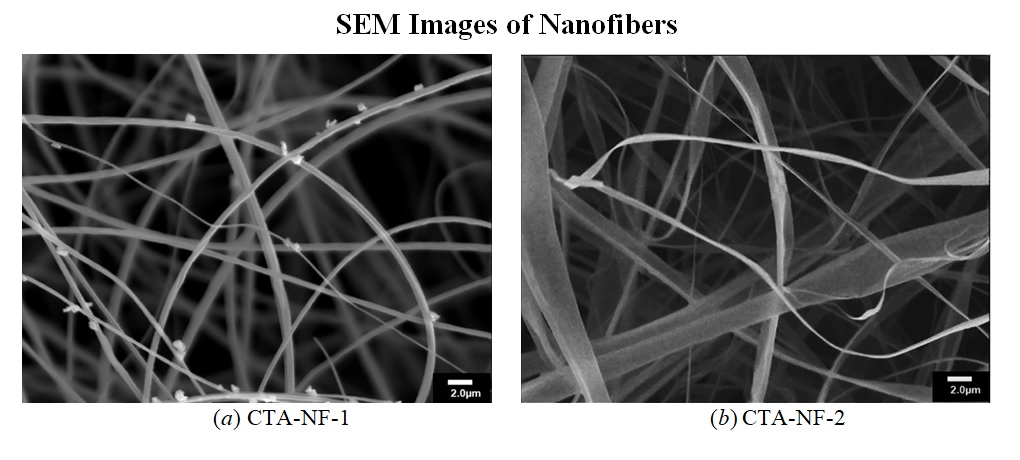Characterization Electrospun Nanofibers Based on Cellulose Triacetate Synthesized from Licorice Root Cellulose
DOI:
https://doi.org/10.31489/2959-0663/2-24-2Keywords:
electrospinning, , cellulose triacetate, nanofibers, X-ray diffraction, FTIR, degree of crystallinity, sorption, thermal stabilityAbstract
Cellulose triacetate (CTA) nanofibers were formed by electrospinning using two binary solvent systems: methylene chloride/ethanol and chloroform/acetone. Previously, licorice root cellulose (LRC) with a degree of polymerization (DP) of 710 was extracted from licorice root waste by alkaline treatment and hydrogen peroxide bleaching at high temperatures. Then CTA with a degree of substitution (DS) of 2.9 and an average molecular weight of 175 kDa was synthesized from LRC using acetic acid and acetic anhydride, sulfuric acid was as a catalyst. The influence of the electrospinning process and various solvent systems on the morphology and structure of nanofibers is studied. The structure and morphology of the nanofibers were characterized by Fourier transform infrared (FTIR) spectroscopy, X-ray diffraction, scanning electron microscopy (SEM), thermal gravimetric analysis (TGA), and the sorption characteristics were also investigated. The results showed that the morphology and structure of nanofibers depended on the solvent mixture used. The average diameters of the CTA nanofibers with grooved morphology varied 200-700 nm (solvent methylene chloride/ethanol) and the dumbbell-shaped (flat ribbon) CTA nanofibers in a wide range from 200 nm to 4 mkm (solvent chloroform/acetone).

Downloads
Published
How to Cite
Issue
Section
License
Copyright (c) 2024 Siroj Sh. Shakhabutdinov, Svetlana M. Yugay, Nurbek Sh. Ashurov, Doniyor J. Ergashev, Abdumutolib A. Atakhanov, Sayyora Sh. Rashidova

This work is licensed under a Creative Commons Attribution-NonCommercial-NoDerivatives 4.0 International License.
This work is licensed under a Creative Commons Attribution-NonCommercial-NoDerivatives 4.0 International License.
Authors retain copyright and grant the journal right of first publication with the work simultaneously licensed under a Creative Commons Attribution License (CC BY-NC-ND 4.0) that allows others to share the work with an acknowledgement of the work's authorship and initial publication in this journal.



